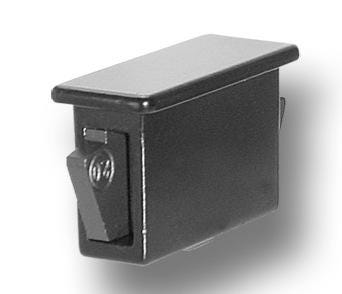August 20, 2013

All markets are continuously driven by customers to find ways to reduce costs. Most cost reduction efforts begin with a focus on the product itself, and as we've seen over the years, the enclosure industry has faced fierce global competition in this regard.
Customers are now becoming better educated to the total cost associated with purchasing a product, and many consumers of server enclosures are focusing their cost-cutting efforts toward logistics. With regard to 19-inch racks, these costs typically include transportation, setup, and installation. However, there are also the unseen costs of having datacenter designs adhere to manufacturer site plan requirements, which mandate proper access and maneuverability inside the facility for pre-assembled enclosures.
Given this perspective, knockdown enclosures entered the market offering the strength and stability of traditional designs while promoting a significant cost savings advantage by having the ability to ship disassembled.
While relatively new to the enclosure industry, flat pack shipping has been successful in many consumer-based industries. The concept is simple. A product is delivered in manageable pieces inside a box and can be assembled at the final location. The tools and hardware needed for assembly -- nuts, bolts, and screws -- are included, along with instructions on how to assemble the product.

A flat pack ready enclosure design can provide three primary benefits to the consumer. As labor is a large part of the process of bringing an enclosure to market, pushing the assembly costs along to the consumer will significantly reduce the manufacturing costs, which allows for a more efficient manufacturing process and a lower sales price. Shipping knockdown products via flat packing, versus the traditional pre-assembled method, significantly reduces shipping costs due to the smaller volume. This is also attractive for manufacturers that want to reach distant or global markets but can't compete due to logistical barriers. Finally, once the product is delivered, knockdown enclosures can be conveniently stored until they are ready for installation. Additional datacenter design allowances, such as oversized elevators, become unnecessary due to the benefits of flat packaging, which provides for increased maneuverability.
A well understood dilemma facing engineers who consider designing knockdown enclosures is the skepticism associated with DIY assembly. Knockdown designs require the use of screws and (cage) nuts to fully assemble the unit, much like the way it is done on the assembly line. Therefore, build quality and the structural stability of the rack become the concern of consumers and their technicians. Losing and forgetting screws, or making a mistake during the assembly process, can result in a product that looks complete but is structurally unsound and liable to fail during its life cycle. This prevents manufacturers from providing a warranty on damages that can result from improper assembly and any certifications or ratings that would normally be associated with the enclosure.
To eliminate these concerns and maximize the advantages outlined, designers should consider latching, hinging, and fastening systems that are quick and simple to install. This helps minimize components and provides a finished product that meets or exceeds the structural integrity of a traditional design. Therefore, the installation method of hardware for knockdown enclosures should be one that ensures zero defects no matter the competency or qualification of the assembler. Latches, hinges, and fasteners that feature a toolless installation method are perfect for such applications. These hardware components can be snapped into cutouts in little time without any loose mounting hardware such as nuts, bolts, or washers. No other steps should be needed for proper assembly. By reducing human error, manufacturers will be able to provide warranties on customer installations and even certifications and ratings to meet or exceed traditional hardware.
Zachary Klares is operations manager at DIRAK Inc.
Related posts:
About the Author(s)
You May Also Like





